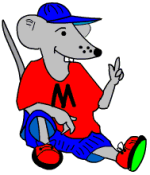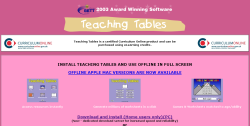 One more maths worksheet with sets of objects to help with counting larger numbers. It is always a good idea to ask for an estimate of the whole amount before starting. Young children only have a limited concept of larger numbers – it can be 1, 2, 3, 4, lots! Grouping into fives or tens helps – but only when children have learned to count up in fives or tens. I would still recommend plenty of practical practice – eg putting a pack of cards into piles of 5 or ten.
One more maths worksheet with sets of objects to help with counting larger numbers. It is always a good idea to ask for an estimate of the whole amount before starting. Young children only have a limited concept of larger numbers – it can be 1, 2, 3, 4, lots! Grouping into fives or tens helps – but only when children have learned to count up in fives or tens. I would still recommend plenty of practical practice – eg putting a pack of cards into piles of 5 or ten.
The second page is a set of number lines to complete, filling in the spaces. Some of these are tricky because they cross the hundreds boundary eg counting on 6 from 97. Make sure your child is confident with counting below 100 before attempting this. Of course it is relatively easy for you to create a number line to put numbers on and to practice counting up and down, and don’t forget snakes and ladders and other dice games which involve counting.
It is always a good idea to listen carefully to your children when they count up to 100 and beyond. Often they will miss whole sets of tens out to begin with. Remember those games of chase you used to play when you had to count to 100 first – now you know why some of your friends managed it so quickly!!
3201-03 Group into fives or tens
3201-04 Count in the hundreds in steps of 1 (pg 1)
 Teaching Tables by Primary Games Ltd
Teaching Tables by Primary Games Ltd Larger numbers can be rounded in just the same way as rounding hundreds or thousands, always referring to the digit below the one you want to round.
Larger numbers can be rounded in just the same way as rounding hundreds or thousands, always referring to the digit below the one you want to round. Mathszone.
Mathszone.